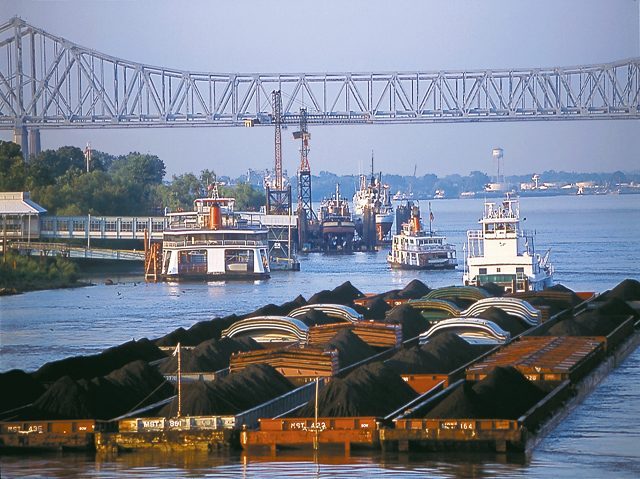(Bloomberg) — Boosted by higher prices and presidential promises of aid, U.S. coal is having a comeback season. Yet a looming quandary remains: Demand continues to shrink.
In the boom-bust cycles of old, the fuel’s use grew relentlessly as a fleet of coal-fired power plants fed America’s hunger for electricity. Now, a new age of clean, cheap natural gas and renewables has emerged, thanks to the shale boom and fears of global warming. That’s led to almost 50 gigawatts of coal-fired generating capacity being shut down since 2012, enough to power New York and Vermont combined. And no new coal plants are being built.
In the past decade, six major suppliers have gone bankrupt, some more than once. Now, some producers say they’re remaking their playbooks to survive in a dwindling market. High rates of return and credit ratings are seen as more key to the future than boosting production.
“Lots of management teams in the past were focused on volume, volume, volume,” George Dethlefsen, chief executive officer of Corsa Coal Corp. in Canonsburg, Pennsylvania, said in a phone interview. "Well, wait a second guys. Let’s think about leverage ratios, credit metrics. Let’s think about rates of return. Those are the metrics you need to be focused on."
China’s Cutback
Over the last six months, the U.S. industry has gained as China, the world’s largest producer and consumer of coal, curbed its own production. That drove spot prices of metallurgical coal used in steelmaking to nearly triple last year to $226 per metric ton, according to The Steel Index. While prices have since eased back to $168.40 as of Tuesday, they’re still twice as high as a year earlier.
Seaborne thermal coal also surged, nearly doubling to $86.15 per metric ton by year’s end.
At the same time, campaign vows by President Donald Trump to roll back regulations and bring back mining jobs raised the struggling industry’s profile and outlook as it entered 2017. Last week, Republicans voted to kill a rule aimed at protecting streams from the effects of coal mining. Trump, meanwhile, has targeted the biggest environmental rules issued under former President Barack Obama, including the landmark Clean Power Plan.
The result: Equity capital markets are once again paying attention.
On Friday, Ramaco Resources held the first U.S. coal initial public offering in two years. It came about earlier than Randall Atkins, the company’s chairman, planned, the result of a push by bankers to take advantage of a new momentum in the industry, he said.
“In September, my phone started burning up with all of these investment banks saying they were being besieged by all of their hedge fund and other investor clients trying to figure out some way to get in and play the metallurgical coal rise,” Atkins said in a phone interview. “They said, ‘Look, please, on bended knee, would you let us try to get you public?”’
Daily Call
Corsa’s Dethlefsen has experienced something similar. Last spring, he could only raise about a third of the equity capital he’d hoped for. By October he was able to raise more than he even wanted. “I get almost a call a day from institutional investors,” Dethlefsen said.
For now, debt capital markets haven’t been quite so bullish — perhaps because lenders are still feeling burned from the wave of bankruptcies that included Peabody Energy Corp., Alpha Natural Resources Inc. and Arch Coal Inc. Those companies all placed bets in 2010 and 2011, the last time coal prices surged, taking out billions of dollars to make acquisitions that proved fatal.
Some industry players fear that as those companies reemerge from bankruptcy with cleaner balance sheets, they may not exercise the caution needed at a time of daunting coal fundamentals.
Natural gas is now king, having surpassed coal as the U.S. power sector’s primary fuel for the first time in April 2015 and outpaced it in most months since. In the first half of 2016, gas supplied 36% of total U.S. electricity generation compared with 31% for coal, according to the U.S. Energy Information Administration.
So far this week, gas futures have traded just above $3 per million British thermal units, a key technical support level for prices.
Global Picture
Globally, a similar picture is emerging with no big demand growth in sight, the International Energy Agency said in a November report. The U.S. will probably cut production because of the global oversupply of the fossil fuel and, in the longer term, U.S. coal demand could fall by 40% by 2040, the agency projects.
Already, U.S. coal output fell to 733 million tons in 2016, down from a record 1.2 billion in 2008, the EIA projects.
“The stakes are higher than they’ve ever been, and there are no margins for error,” Robert E. Murray, CEO of Murray Energy Corp., the largest closely held U.S. coal miner, said in a phone interview. “You have to watch every penny, and you have to get every bit of market you can.”
Alliance Resource Partners LP CEO Joe Craft is feeling the pinch. His company turned in a fourth-quarter profit that beat estimates, in part because it managed to sell more tons than expected. Asked on a call with investors if he felt incentivized to raise production, Craft said no. He’d need utilities to show him a longer-term commitment to take the extra coal first, and that would depend on rising gas prices.
Rather than “just bring on tonnage” now, dropping the price and spurring battles with competitors, Craft said he’d rather wait until the demand for coal starts to rise. Given the size of coal markets, he said, “the math doesn’t seem to work if you try to get into that situation.”
Bloomberg News by Tim Loh




